Suillus luteus: delicious, sticky ringed boletus
2 years ago · Updated 6 months ago
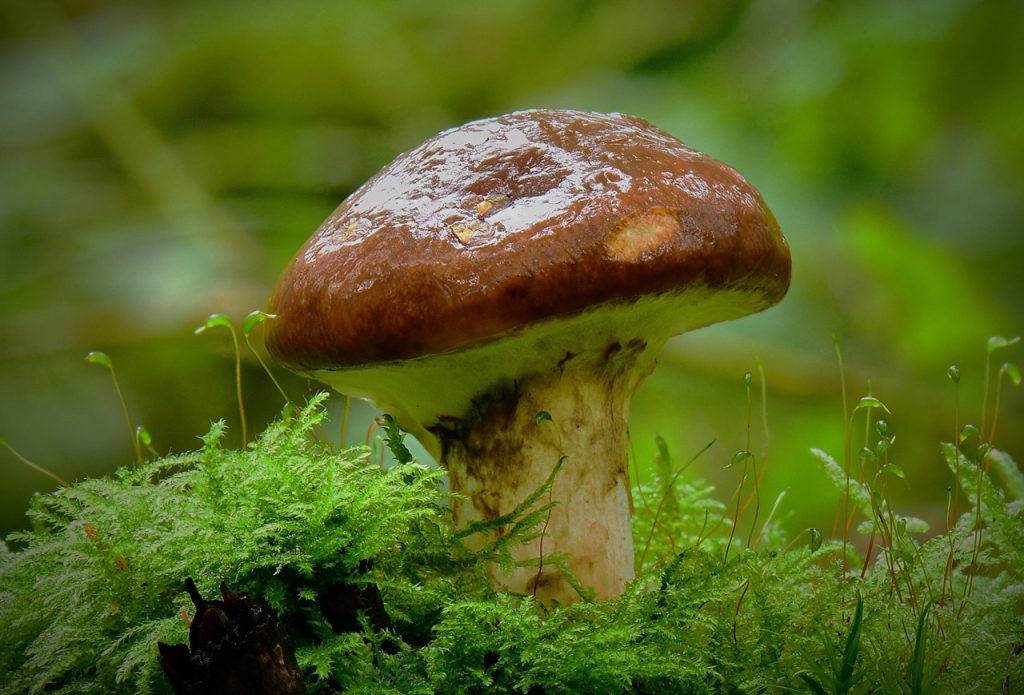
In the vast and fascinating world of mushrooms, Suillus luteus stands out as a distinctive figure, known by several common names that reflect its appearance and unique characteristics.
Known as babosillo, ring bolete, or sticky mushroom, this fungus has captured the imagination of mycologists and nature lovers around the world. At La Casa de las Setas, we invite you to explore Suillus luteus in depth, examining its characteristics, habitat, growing season, edibility, and much more.
Common names in different languages
Before diving into the depths of Suillus luteus, it is interesting to explore how it is known in different parts of the world. Here is a list of common names in several languages:
- English: slippery jack, sticky bun
- French: bolet jaune, beurré, baveux, nonnette voilée
- German: butterpilz, butter-röhrling
- Italian: pinarello, pinarolo, bavusa
- Basque: Lerdeki marroia, Pinudi-onddo likin, Pinudi onddo bikordun
- Catalan: Molleric granellut, Pinetell de calceta
- Galician: Butterröhrling, Butterpilz
- Swedish: smörsopp
- Danish: Brungul rørhat
- Polish: maslak zwyczajny
- Norwegian: Smørsopp
These names in different languages illustrate the diversity and universality of this mushroom, which is found in many regions of the world.
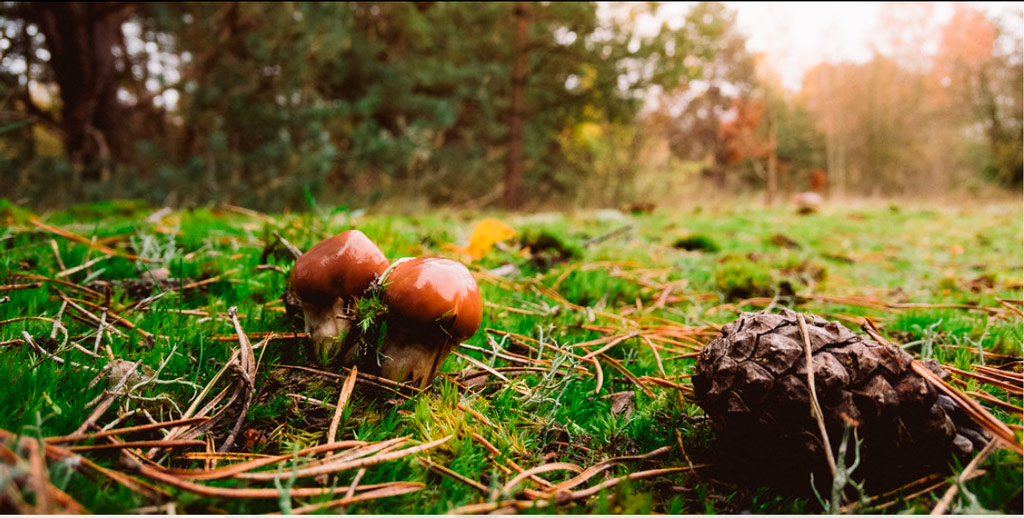
Characteristics of Suillus luteus
Suillus luteus is distinguished by several distinctive characteristics that make it unmistakable. Let's take a closer look at its most notable features:
Cap
- Size: The diameter of the cap varies from 5 to 12 cm, sometimes even larger.
- Shape: When young, it has a slightly conical hemispherical shape, which over time becomes convex. Sometimes it can develop a blunt nipple.Cuticle: The cuticle of Suillus luteus is exceptionally slimy and sticky, especially in humid environments. This is due to a mucilaginous coating that covers its entire surface.
- Color: Its color is variable, ranging from dark brownish brown to yellowish brown, with creamy and purplish areas. The latter tend to appear in adult specimens or in less humid environments.
- Margin: The margin of the cap is protruding, and in young specimens, remnants of the partial veil can often be found.
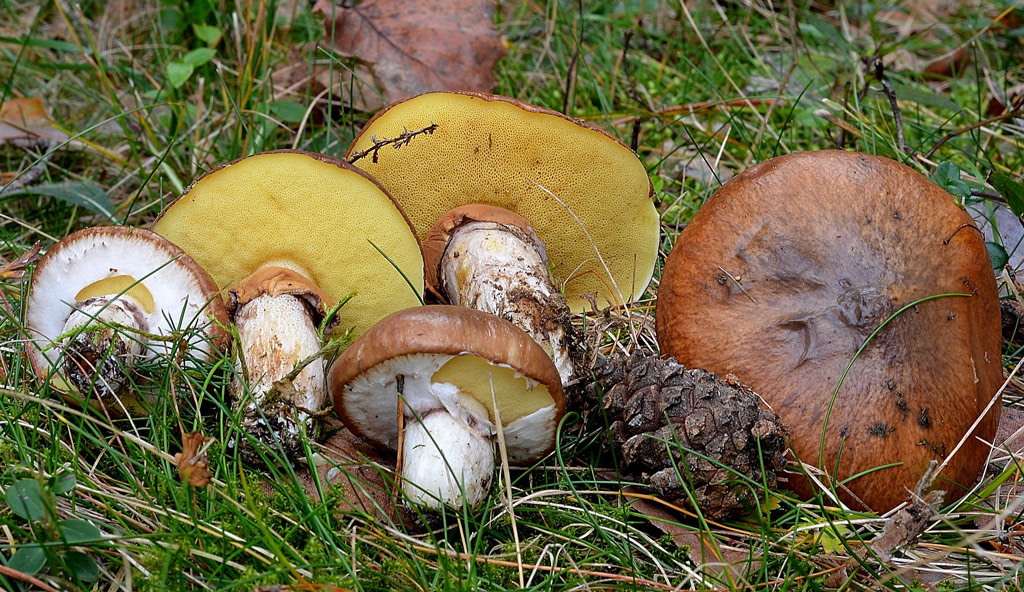
Hymenium
- Tubes: The tubes of Suillus luteus are pale yellow or lemon-colored, sometimes slightly decurrent.
- Pores: It has small, angular pores that become more evident as the mushroom ages.
- Color: The color of the pores does not change when rubbed, although over time they tend to take on darker, olive tones.
Stem
- Shape: The stem of Suillus luteus is cylindrical and generally short or proportional to the size of the cap.
- Color: On the upper part of the ring, the stem is pale yellowish and granular, while on the lower part it tends to be browner.
- Ring: This mushroom has a distinctive ring, which is white on the upper part and purplish on the lower part.
Over time, this ring may remain attached to the stem or even disappear completely.
Flesh
- Texture: The flesh of Suillus luteus is thick but tender, being slightly more fibrous in the stem area.
- Color: Its flesh is pale yellow in color and does not change color when exposed to air.
- Smell and taste: In terms of smell and taste, there are no distinctive characteristics that differentiate it significantly from other mushroom species.
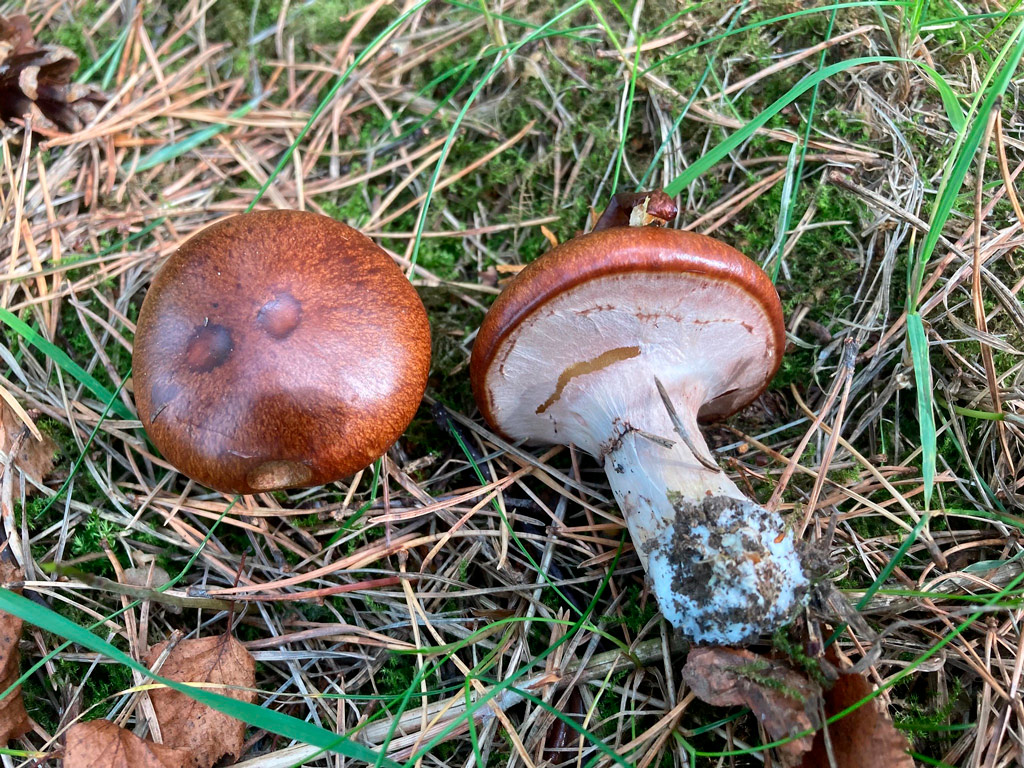
Habitat and growing season
Suillus luteus has a close symbiotic relationship with pine forests, particularly with Pinus sylvestris. This mycorrhizal association means that the mushroom establishes a beneficial relationship with the pine roots, contributing to the health and growth of both.
In terms of growing season, Suillus luteus fruits abundantly during the fall and late summer, typically from August to December. Interestingly, it is usually one of the first mushroom species to appear near streams and small bodies of water, adding an intriguing element to its life cycle.
Confusion and identification
Identifying Suillus luteus is not usually a complicated task due to its unique characteristics. However, it can be confused with other Suillus species, such as Suillus granulatus or Suillus grevillei. These mushrooms share the same habitat, but Suillus luteus can be distinguished by its ring and generally larger size. Fortunately, all of these species are edible, which offers some flexibility in harvesting and culinary use.
In humid conditions, the high viscosity of the Suillus luteus cuticle makes it difficult to confuse it with other boletus and mushrooms of similar appearance.
Harvesting Suillus luteus
Suillus luteus is widely known as the “slippery jack” due to the stickiness and adhesiveness of its cuticle. In Italy, this mushroom is used in industrial pizza production as a substitute for “Boletus.” However, it is important to note that it is best harvested in dry weather, as rain can soften its structure excessively.
It is recommended to choose young specimens, as Suillus luteus tends to be quickly parasitized as it ages. Despite some limitations in terms of texture, its exceptional flavor makes it a true culinary treasure that deserves the attention of mycology enthusiasts and gourmet cooks.
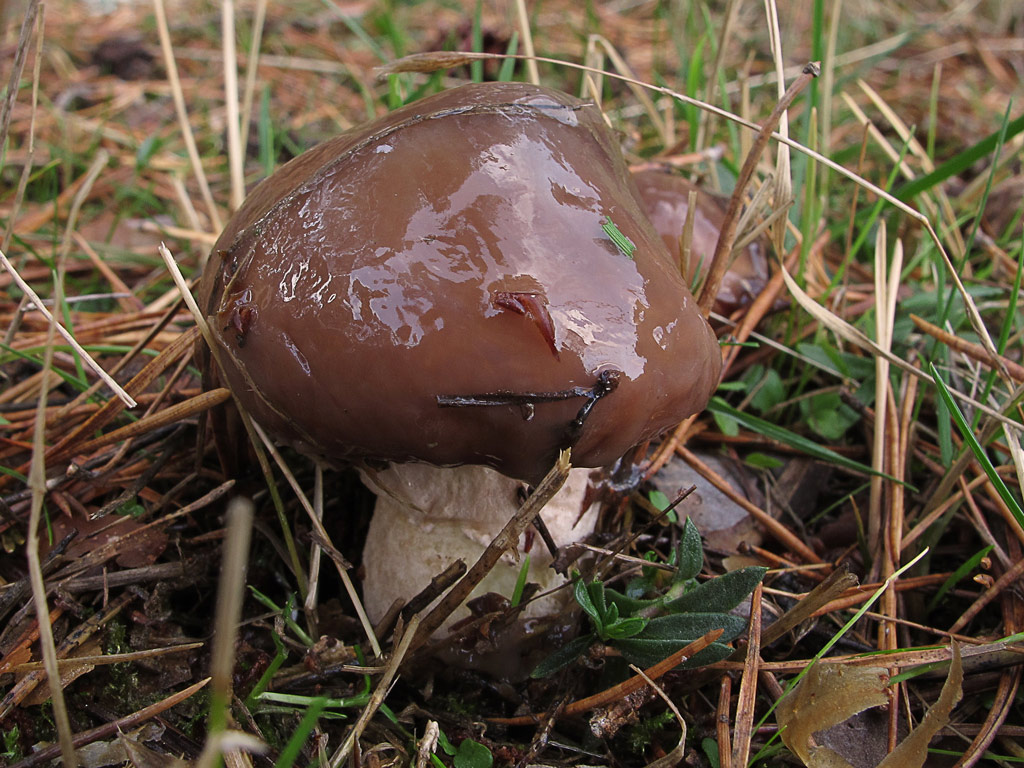
Edibility and culinary uses
Suillus luteus is considered a good edible mushroom, although throughout history it has been underrated in some cultures due to its abundance and the challenges posed by cleaning it. To appreciate its flavor and avoid laxative effects, it is recommended to remove the sticky cuticle and tubes from older specimens.
One of the most effective culinary strategies for this mushroom is to prepare dishes in which its texture can be camouflaged, as it tends to be slightly soft. It cooks well and is particularly suitable for soups, creams, dishes with red meat, omelets, pies, rice, and stewed potatoes. From a gastronomic point of view, Suillus luteus is undoubtedly one of the best Suillus mushrooms due to its excellent flavor, although unfortunately its texture may not be the most appealing to all palates.
Delicious recipes with Suillus luteus
Suillus luteus and asparagus risotto
Ingredients:
- 200g Arborio rice
- 150g fresh Suillus luteus mushrooms, cleaned and thinly sliced
- 200g green asparagus, cut into pieces
- 1 small onion, finely chopped
- 2 cloves garlic, chopped
- 1 liter hot vegetable broth
- 50g grated Parmesan cheese
- Olive oil
- Salt and pepper to taste
Instructions:
- In a large skillet, heat a little olive oil and sauté the onion and garlic until tender and golden.
- Add the Suillus luteus mushrooms and asparagus and sauté for a few minutes until tender.
- Add the rice and mix well so that it absorbs the flavors.
- Start adding the hot vegetable broth, ladle by ladle, and stir constantly until the rice is al dente and has absorbed most of the broth.
- Remove from the heat and stir in the Parmesan cheese. Season with salt and pepper to taste.
- Serve hot and garnish with a little extra Parmesan cheese.

Suillus luteus and potato soup
Ingredients:
- 250g fresh Suillus luteus mushrooms, cleaned and chopped
- 4 medium potatoes, peeled and diced
- 1 large onion, chopped
- 2 cloves garlic, chopped
- 1 liter mushroom broth
- 250ml heavy cream
- Olive oil
- Salt and pepper to taste
- Fresh parsley, chopped, for garnish
Instructions:
- In a large saucepan, heat a little olive oil and sauté the onion and garlic until soft and golden.
- Add the Suillus luteus mushrooms and potatoes and sauté for a few minutes.
- Pour in the mushroom broth and cook over medium heat until the potatoes are tender.
- Using a hand blender, blend the soup until smooth.
- Return the soup to the saucepan and add the cream.
Heat over low heat without boiling. - Season with salt and pepper to taste.
- Serve hot and garnish with chopped fresh parsley.
These recipes will allow you to enjoy the delicious versatility of Suillus luteus in exquisite dishes that highlight its unique flavor. Enjoy this wonderful mushroom species in your kitchen!
See you soon in the mountains!

Te pueden interesar